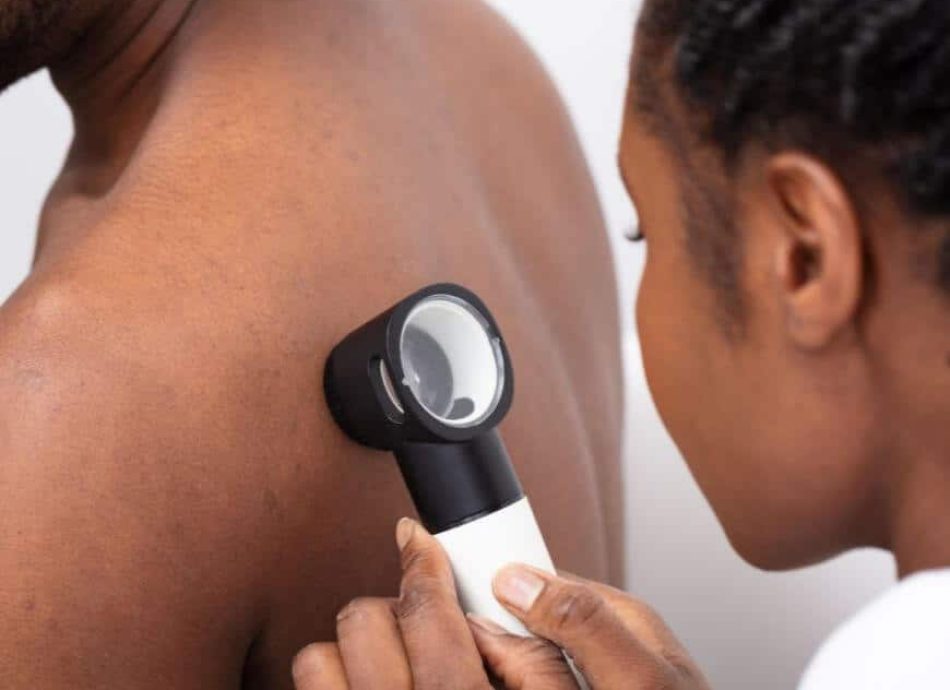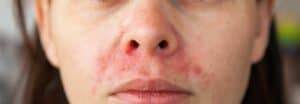Award winning dermatology service, with over 20 years of experience
Short waiting lists, on some occasions offering same week appointments
Safe environment, in Care Quality Commission approved facilities
Mole Removal Treatments Incude:
MOLE REMOVAL SHREWSBURY
Both benign and cancerous moles can be removed at St Michael’s Clinic.
Depending on where your moles are on your body and the size of them, your moles can cause embarrassment and may want to be removed for cosmetic reasons. When it comes to skin cancer, speedy treatment is vital so the removal of cancerous or precancerous moles is always advised. Moles can be removed in a range of different ways depending on its size, location and characteristics. If you are not sure if your mole is suspicious and needs removing, please take a look at our page about mole checks for more information.
SIGNS A MOLE MAY NEED REMOVING
Most moles are completely harmless, but some moles can develop into Melanoma skin cancer so it’s important to check your skin regularly so that you can spot any changes in size, shape, or colour early and get them checked out if you notice any changes.
Things to look out for when you’re checking your moles include:
- Asymmetry – one half doesn’t match the other half
- Borders – the mole has uneven borders
- Colour – there is a variety of colours in the mole (brown, tan or black)
- Diameter – the mole grows larger than a pencil eraser (¼ inch)
- Evolution – the mole evolves in size, shape, colour, elevation or there is a new characteristic
CRYOTHERAPY
Cryotherapy uses cold treatment to remove the mole. Liquid nitrogen is used to freeze the tissue, causing the area to scab over. After about a month, the scab containing the mole will fall off your skin.
LASER MOLE REMOVAL
Mole removal using a laser is best suited for small moles and is a good option when the mole is on the face as there is less risk of scarring. This treatment to remove moles works by using bursts of light to remove the cells which make up the moles and usually takes a couple of treatments to completely remove the mole.
SHAVE REMOVAL
Moles can be removed from the face and body using a shave removal technique which involves removing the mole using a scalpel. The treatment area will be numbed with anesthesia and a small pink mark may be left where the mole once was, but this should fade over time.
EXCISION REMOVAL
Excision mole removal works by completely removing the mole by cutting it out, along with a small area of surrounding healthy tissue. This treatment is usually used to find out if the mole is cancerous. The area is treated with local anesthetic and then the mole itself is removed along with a small area of normal skin. The wound is either stitched up or a skin graft is used to connect a patch of healthy skin from a hidden part of the body to the affected area.
FREQUENTLY ASKED QUESTIONS
HOW SHOULD I CHECK MY MOLES?
Most moles are completely harmless, but it’s important to check your skin regularly so that you can spot any changes in size, shape, or colour early and get them checked out.
The things to look out for when you’re checking your moles include:
- Colour: Uneven colours or changes in colour; most moles are just one colour, but melanomas are made up of lots of different shades.
- Size: Healthy moles don’t generally change size, so if you notice a mole getting bigger it’s important to have it checked out
- Edges: Most moles are usually circular or oval with smooth edges, so if your mole develops a rough or uneven edge it could indicate something more serious
- Irritation: Most moles will sit on your skin and not cause any problems, but if they turn red, start to itch, bleed, become inflamed or crusty see a specialist
A change in the size and shape of your moles doesn’t necessarily mean that you have developed melanoma; there are a variety of other reasons why your moles may be behaving that way. The most important thing to remember is to check your moles regularly, and if you are worried about any of your moles make an appointment to see a member of our team of dermatology specialists.
HOW OFTEN DO I NEED MY MOLES CHECKING?
We recommend an annual review of your moles to identify any changes which may have occurred since your last appointment. However those at risk of skin cancer might need to be seen more frequently than this. We will send you a reminder to book your annual check. If you notice any changes to your moles between appointments, please contact us to book a mole check appointment.
HOW DO I KNOW WHICH MOLE REMOVAL TREATMENT IS RIGHT FOR ME?
During your consultation with a consultant dermatologist, your mole will be assessed and the right treatment option will be recommended for you. This will depend on the assessment and location of the mole.
MOLE TREATMENT PRICE
REQUEST A CALL BACK
Please fill in this form and one of our team will give you a call back to arrange a consultation with one of our expert dermatologists.

HEAR FROM OUR PATIENTS
WHY Have MOLE REMOVal in Shrewsbury AT ST. MICHAEL'S CLINIC?
Here at St. Michael’s Clinic, Shrewsbury’s leading private skin and laser treatment clinic, our experts are specialists in all aspects of dermatology, skin cancer, anti-ageing and beauty treatments. We are able to offer NHS patients consultant-led dermatology services in Shrewsbury.
St. Michael’s Clinic is regulated by the Care Quality Commission, ensuring the best level of treatment is provided to you in a safe environment. We are part of the Dermatology Partnership, a leading group of dermatology clinics, defined by clinical excellence and focusing on leading dermatological care.
MOLE INSIGHTS AND ADVICE

Your Guide to Autumn Skincare
With the weather gradually cooling and leaves taking on their autumnal palette, it’s also a gentle reminder that winter is on its way. Maintaining a vibrant and healthy skin during the transition from summer to cooler days can be challenging. Fear not – this comprehensive

The Definitive Guide to Eczema
Eczema Awareness Month in October is a global initiative spotlighting those who suffer from this demanding skin ailment. Our perpetual aim is to arm you with a well-rounded understanding of eczema‘s core causes, differing treatments and beneficial coping mechanisms. This all-inclusive guide offers penetrating insights

Exploring Varicose Veins: Recognising, Managing and Preventing
Varicose Disease Awareness Month is focused on raising awareness about varicose veins, a common but frequently overlooked condition affecting millions globally. Throughout September, our goal is to emphasise the importance of early detection, explore the causes, treatment options and highlight lifestyle changes that can help




